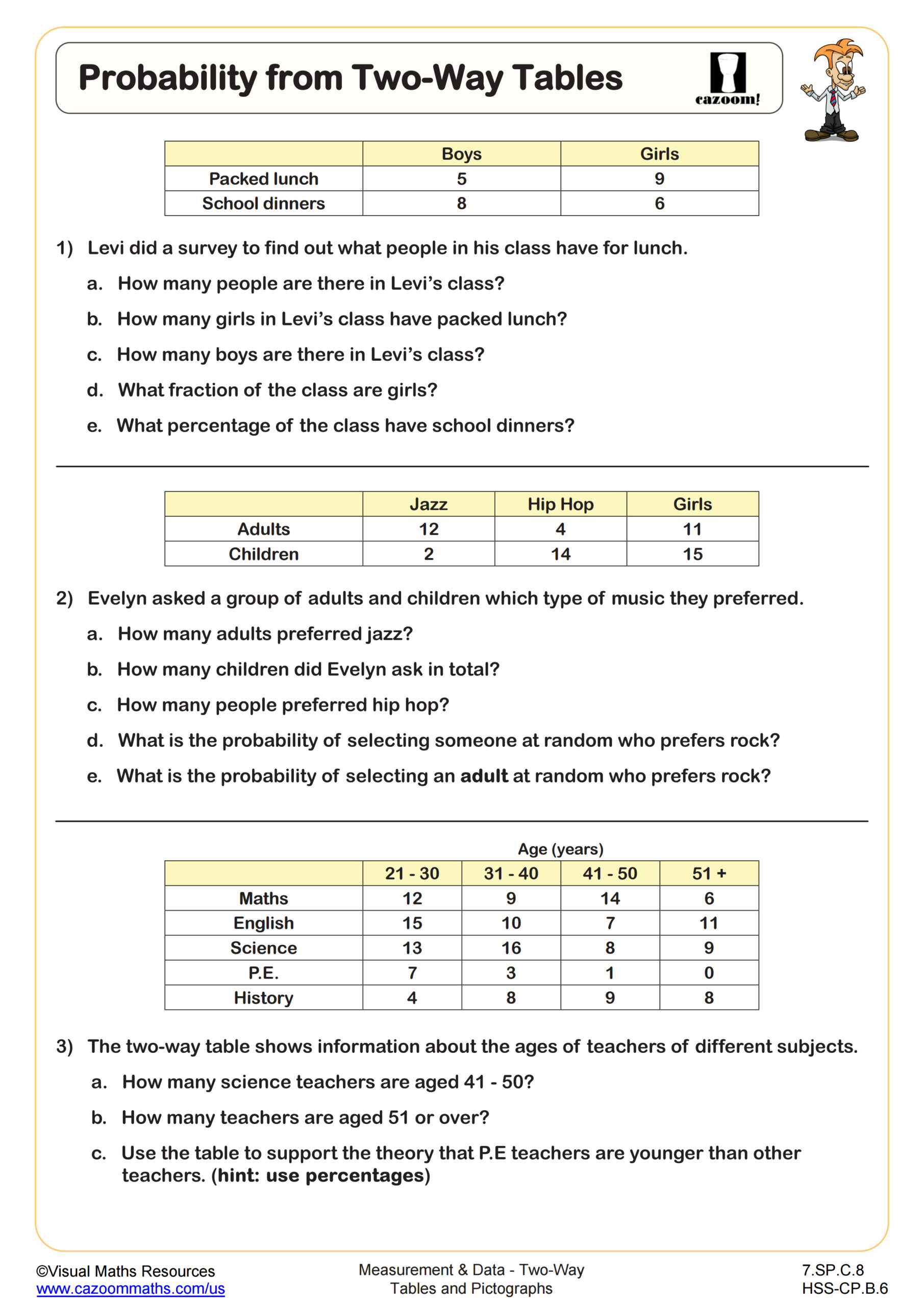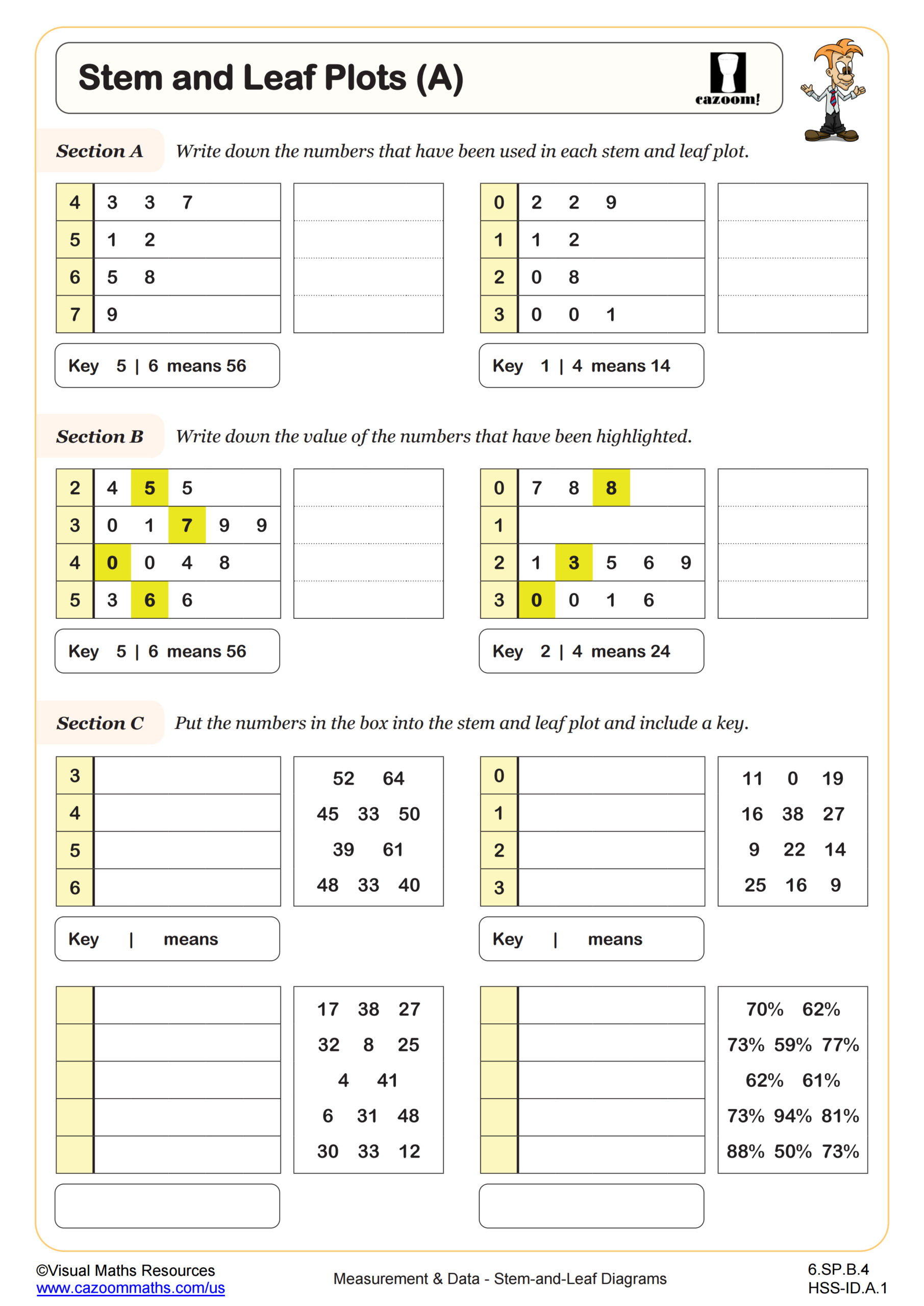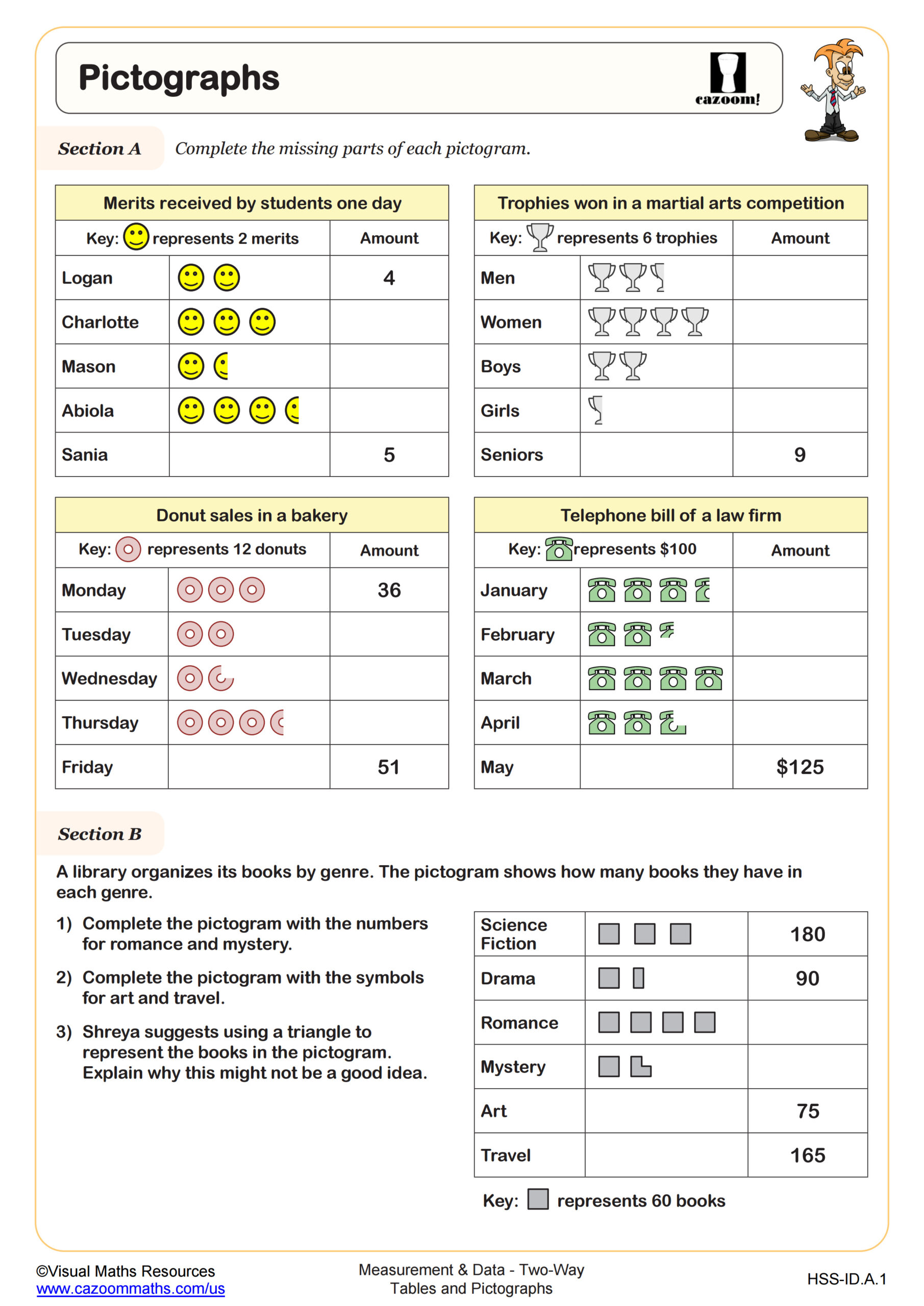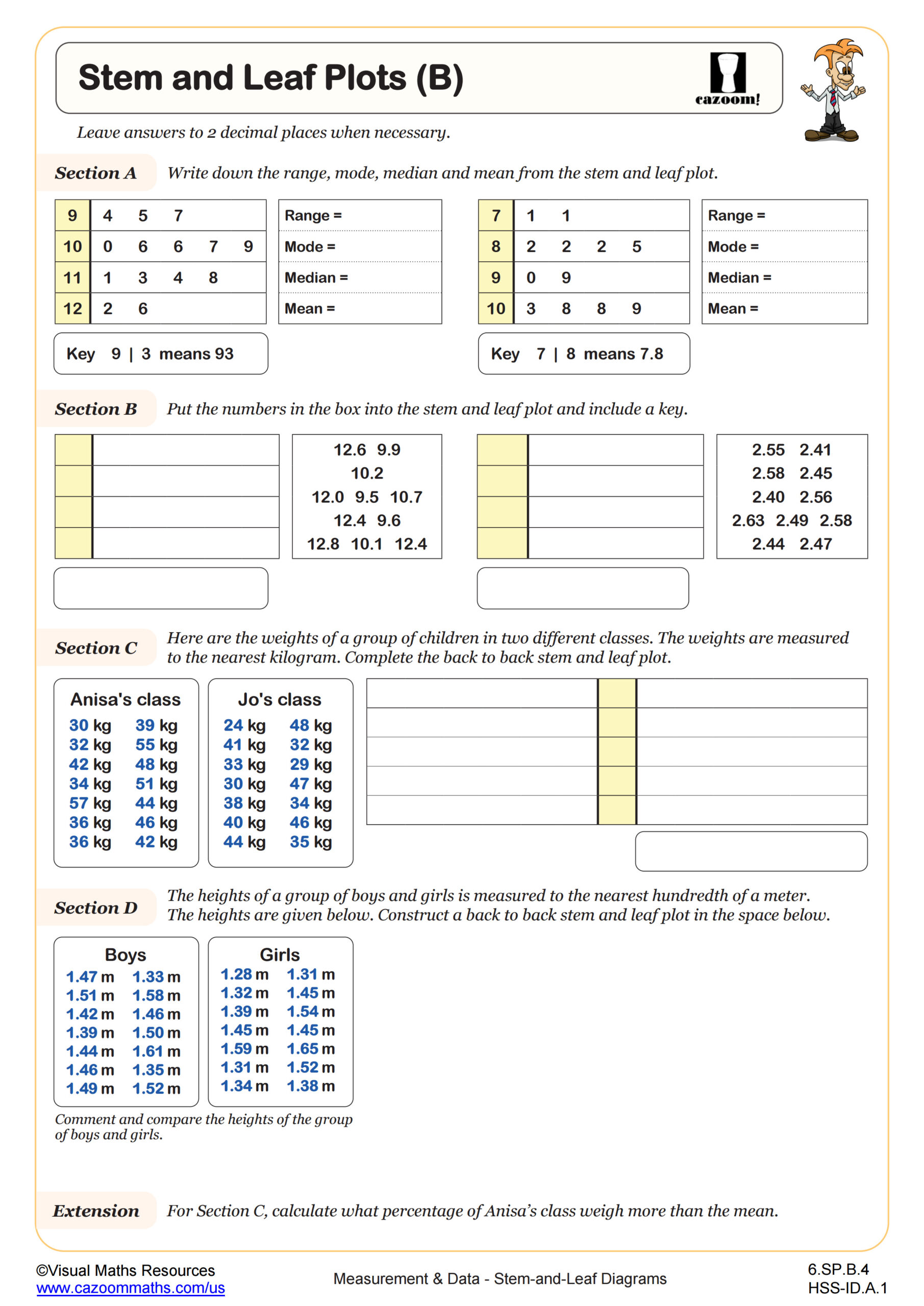Loading...
Back to:
Probability from Two-Way Tables WORKSHEET
Suitable for Grades: 7th Grade, Geometry
CCSS: 7.SP.C.8, HSS.CP.B.6
CCSS Description: Find probabilities of compound events using organized lists, tables, tree diagrams, and simulation. a. Understand that, just as with simple events, the probability of a compound event is the fraction of outcomes in the sample space for which the compound event occurs. b. Represent sample spaces for compound events using methods such as organized lists, tables and tree diagrams. For an event described in everyday language (e.g., “rolling double sixes”), identify the outcomes in the sample space which compose the event. c. Design and use a simulation to generate frequencies for compound events. For example, use random digits as a simulation tool to approximate the answer to the question: If 40% of donors have type A blood, what is the probability that it will take at least 4 donors to find one with type A blood?
Find the conditional probability of A given B as the fraction of B’s outcomes that also belong to A, and interpret the answer in terms of the model.
Find the conditional probability of A given B as the fraction of B’s outcomes that also belong to A, and interpret the answer in terms of the model.
Probability from Two-Way Tables WORKSHEET DESCRIPTION
Use this worksheet alongside Completing Two-way Tables. This worksheet contains three completed two-way tables for learners to read from and answer questions. The questions posed will require knowledge of fractions, percentages, and probability.




